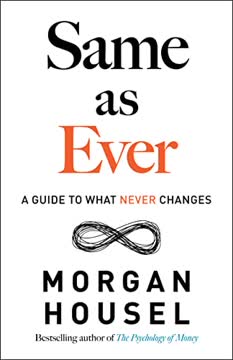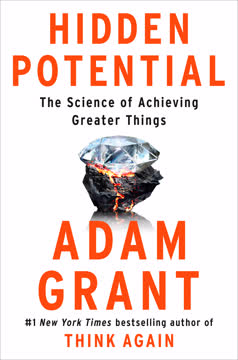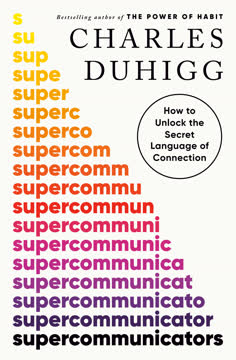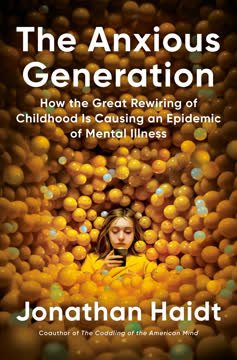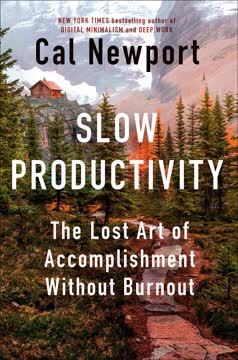मुख्य निष्कर्ष
1. अच्छे संबंध सुखी और स्वस्थ जीवन की नींव हैं
अच्छे संबंध हमें अधिक खुश और स्वस्थ बनाए रखते हैं। बस यही सच है।
वैज्ञानिक प्रमाण: कई अध्ययनों ने, जिनमें 84 वर्षों तक चले हार्वर्ड के वयस्क विकास अध्ययन भी शामिल है, यह बार-बार साबित किया है कि मजबूत सामाजिक संबंध अधिक खुशी, बेहतर स्वास्थ्य और लंबी उम्र से जुड़े होते हैं। यह सच हर संस्कृति, उम्र और सामाजिक-आर्थिक पृष्ठभूमि में समान रूप से लागू होता है।
गुणवत्ता मात्रा से अधिक महत्वपूर्ण: यह जरूरी नहीं कि आपके पास बहुत बड़े नेटवर्क हों, बल्कि मायने रखता है कि आप सार्थक संबंधों को पोषित करें। कुछ करीबी रिश्ते भी महत्वपूर्ण लाभ दे सकते हैं। कुंजी है ऐसे संबंधों को विकसित करना जो पारस्परिक समर्थन, समझ और सकारात्मक संवाद प्रदान करें।
संबंधों के लाभ:
- तनाव में कमी और मानसिक स्वास्थ्य में सुधार
- शारीरिक स्वास्थ्य और दीर्घायु में वृद्धि
- जीवन की चुनौतियों का सामना करने में अधिक लचीलापन
- उद्देश्य और अपनापन की भावना में वृद्धि
2. ध्यान और उपस्थिति हमारे संबंधों को मजबूत बनाते हैं
ध्यान प्रेम का सबसे बुनियादी रूप है।
वर्तमान में रहें: हमारी तकनीकी-प्रधान दुनिया में, दूसरों को पूरा ध्यान देना दुर्लभ और मूल्यवान हो गया है। बातचीत में सचेतता और सक्रिय सुनवाई का अभ्यास हमारे संबंधों को गहरा कर सकता है।
गुणवत्तापूर्ण समय: केवल साथ समय बिताना ही काफी नहीं, बल्कि उस समय पूरी तरह से जुड़े रहना जरूरी है। ध्यान भटकाने वाली चीजें दूर रखें, आँखों में आँखें डालकर बात करें, और जो सामने वाला कह रहा है या अनुभव कर रहा है उसमें सच्ची रुचि दिखाएं।
व्यावहारिक कदम:
- परिवार या दोस्तों के लिए तकनीक-मुक्त समय निर्धारित करें
- बिना बीच में टोकें या जवाब की योजना बनाए सक्रिय सुनवाई करें
- साझा अनुभव और बातचीत को बढ़ावा देने वाली गतिविधियों में भाग लें
- प्रियजनों से नियमित रूप से, भले ही थोड़ा समय हो, संपर्क बनाए रखें ताकि वे जान सकें कि आप उनकी परवाह करते हैं
3. चुनौतियों का सामना करना संबंधों और कल्याण को बेहतर बनाता है
[हार्वर्ड अध्ययन] ने खुशी के दो स्तंभ बताए हैं... एक है प्रेम। दूसरा है जीवन से निपटने का ऐसा तरीका ढूँढना जो प्रेम को दूर न करे।
मुश्किलों को अपनाएं: समस्याओं से बचना अक्सर उन्हें बढ़ा देता है। इसके बजाय, खुले मन से चुनौतियों का सामना करना और उन्हें सुलझाने की इच्छा रखना संबंधों और व्यक्तिगत विकास को मजबूत करता है।
लचीली रणनीतियाँ: विभिन्न जीवन स्थितियों से निपटने के लिए लचीले उपाय विकसित करें। इसमें मदद मांगने की तत्परता, समस्याओं पर खुलकर बात करना और परिस्थिति के अनुसार अपनी रणनीति बदलना शामिल है।
मुख्य उपाय:
- अपनी भावनात्मक प्रतिक्रियाओं को समझने के लिए आत्म-चिंतन करें
- चुनौतियों के बारे में ईमानदारी से संवाद करें
- जरूरत पड़ने पर भरोसेमंद मित्रों, परिवार या विशेषज्ञों से सहायता लें
- कठिनाइयों को विकास और सीखने के अवसर के रूप में देखें
4. कार्यस्थल के संबंध हमारे समग्र सुख-शांति पर गहरा प्रभाव डालते हैं
हर दिन को उस फसल से न आंकें जो आपने काटी, बल्कि उन बीजों से आंकें जो आपने बोएं।
कार्यालय के संबंध: चूंकि हम अपने समय का एक बड़ा हिस्सा कार्यस्थल पर बिताते हैं, इसलिए सहकर्मियों के साथ सकारात्मक संबंध बनाना हमारे समग्र कल्याण और नौकरी की संतुष्टि को बहुत बढ़ा सकता है।
उत्पादकता से परे: कार्य संबंध केवल उत्पादकता बढ़ाने तक सीमित नहीं हैं। वे अपनापन, कठिन समय में समर्थन और स्थायी मित्रता भी प्रदान करते हैं।
कार्य संबंधों को बढ़ावा देना:
- सहकर्मियों के साथ अनौपचारिक बातचीत के लिए समय निकालें
- संभव हो तो सहयोगियों की मदद और समर्थन करें
- टीम-बिल्डिंग गतिविधियों में भाग लें या उनका आयोजन करें
- पेशेवर बातचीत में सहानुभूति और सक्रिय सुनवाई का अभ्यास करें
5. दोस्ती महत्वपूर्ण समर्थन देती है और जीवन की गुणवत्ता बढ़ाती है
बिना दोस्तों के, कोई भी जीना पसंद नहीं करेगा।
विविध लाभ: दोस्ती भावनात्मक समर्थन, साझा अनुभव और अपनापन प्रदान करती है। वे व्यावहारिक मदद भी दे सकती हैं, हमारे दृष्टिकोण को व्यापक बनाती हैं और व्यक्तिगत विकास में योगदान करती हैं।
जीवन भर का महत्व: दोस्ती का स्वरूप जीवन के विभिन्न चरणों में बदल सकता है, लेकिन इसका महत्व हमेशा बना रहता है। बचपन से लेकर वृद्धावस्था तक, दोस्तों का होना अधिक खुशी और बेहतर स्वास्थ्य से जुड़ा होता है।
दोस्ती को पोषित करना:
- नियमित रूप से संपर्क बनाए रखने का प्रयास करें, भले ही थोड़ा समय हो
- अपने दोस्तों के जीवन और अनुभवों में सच्ची रुचि दिखाएं
- अच्छे और कठिन समय दोनों में विश्वसनीय और सहायक बनें
- गतिविधियों या परंपराओं के माध्यम से साझा अनुभव बनाएं
6. पारिवारिक संबंध बदलते रहते हैं, जिसके लिए अनुकूलन और समझ आवश्यक है
इसे कबीला कहो, नेटवर्क कहो, जनजाति कहो या परिवार: जो भी कहो, जो भी हो, तुम्हें एक चाहिए।
बदलते रोल: जीवन के विभिन्न चरणों में हमारे परिवार में हमारी भूमिकाएँ बदलती हैं। इन परिवर्तनों को समझना और उनके अनुसार खुद को ढालना मजबूत पारिवारिक बंधन बनाए रखने में मदद करता है।
पीढ़ीगत समझ: हर पीढ़ी की अपनी चुनौतियाँ और दृष्टिकोण होते हैं। पीढ़ियों के बीच सहानुभूति और खुली बातचीत को बढ़ावा देना पारिवारिक संबंधों को मजबूत करता है और पारस्परिक समर्थन प्रदान करता है।
पारिवारिक बंधन मजबूत करना:
- पारिवारिक परंपराओं या रीति-रिवाजों को स्थापित और बनाए रखें
- पारिवारिक बातचीत में सक्रिय सुनवाई और सहानुभूति का अभ्यास करें
- बदलती भूमिकाओं और जिम्मेदारियों को स्वीकारें और सम्मान दें
- पीढ़ियों के बीच साझा अनुभवों के अवसर बनाएं
7. अंतरंग साझेदारी हमारे स्वास्थ्य और खुशी को गहराई से प्रभावित करती है
जब हम बच्चे थे, तो सोचते थे कि बड़े होने पर हम कमजोर नहीं रहेंगे। लेकिन बड़े होना है कमजोरियों को स्वीकारना... जीना है कमजोर होना।
पारस्परिक विकास: अंतरंग साझेदारियां व्यक्तिगत विकास, भावनात्मक समर्थन और साझा अनुभवों के लिए अनूठे अवसर प्रदान करती हैं। ये हमारे मानसिक और शारीरिक स्वास्थ्य पर गहरा प्रभाव डाल सकती हैं।
चुनौतियों का सामना: सभी रिश्तों में कठिनाइयाँ आती हैं। जो जोड़े मिलकर इन चुनौतियों का सामना करते हैं, वे अपने बंधन और व्यक्तिगत लचीलापन को मजबूत करते हैं।
मजबूत साझेदारी बनाना:
- खुलकर और ईमानदारी से संवाद करें
- नियमित रूप से प्रशंसा और स्नेह दिखाएं
- एक-दूसरे के व्यक्तिगत विकास और लक्ष्यों का समर्थन करें
- जीवन की चुनौतियों और परिवर्तनों का साथ मिलकर सामना करें
8. सामाजिक फिटनेस शारीरिक फिटनेस जितनी ही आवश्यक है
एक उदास आत्मा आपको कीटाणु से कहीं तेज़ मार सकती है।
सक्रिय पोषण: जैसे हम अपने शरीर का व्यायाम करते हैं, वैसे ही हमें अपने सामाजिक संबंधों को भी सक्रिय रूप से बनाए रखना और सुधारना चाहिए। इस "सामाजिक फिटनेस" के लिए नियमित ध्यान और प्रयास जरूरी है।
समग्र स्वास्थ्य: सामाजिक, मानसिक और शारीरिक स्वास्थ्य की आपसी जुड़ाव को समझना अधिक व्यापक कल्याण की ओर ले जाता है। सामाजिक फिटनेस की उपेक्षा अन्य स्वास्थ्य पहलुओं को प्रभावित कर सकती है।
सामाजिक फिटनेस सुधारने के उपाय:
- अपने सामाजिक संबंधों का नियमित मूल्यांकन और चिंतन करें
- संबंधों को सुधारने या बढ़ाने के लिए लक्ष्य निर्धारित करें
- सक्रिय सुनवाई और सहानुभूति जैसी सामाजिक कौशलों का अभ्यास करें
- नए सामाजिक अनुभवों और संबंधों की खोज करें
9. अपने संबंधों और जीवन संतोष को सुधारने के लिए कभी देर नहीं होती
अच्छा जीवन कोई मंजिल नहीं, बल्कि वह रास्ता है जिस पर आप चल रहे हैं, और वे लोग जो आपके साथ चल रहे हैं।
लगातार विकास: उम्र या पिछले अनुभवों की परवाह किए बिना, अपने संबंधों और जीवन संतोष को बेहतर बनाना हमेशा संभव है। परिवर्तन और विकास की मानवीय क्षमता जीवन भर बनी रहती है।
छोटे कदम, बड़े प्रभाव: संबंधों और सामाजिक जुड़ाव को सुधारने के लिए छोटे प्रयास भी कल्याण में महत्वपूर्ण सकारात्मक बदलाव ला सकते हैं। हर बातचीत जुड़ाव और विकास का अवसर है।
सुधार के लिए कदम:
- अपने वर्तमान संबंधों और विकास के क्षेत्रों पर विचार करें
- दूसरों से जुड़ने और संबंधों को पोषित करने में पहल करें
- किसी भी उम्र में नए संबंधों और अनुभवों के लिए खुले रहें
- अपने जीवन के सकारात्मक संबंधों के लिए कृतज्ञता व्यक्त करें
अंतिम अपडेट:
FAQ
What's The Good Life about?
- Focus on Relationships: The Good Life by Robert Waldinger and Marc Schulz explores the findings of the Harvard Study of Adult Development, emphasizing that the quality of our relationships is key to a fulfilling life.
- Scientific Insights: The book combines scientific research with personal stories to show how good relationships contribute to happiness and health, challenging the belief that success and wealth are primary happiness indicators.
- Practical Applications: It offers actionable advice on cultivating and maintaining relationships, making it both informative and practical for readers seeking to improve their lives.
Why should I read The Good Life?
- Evidence-Based Wisdom: Grounded in the longest scientific study of happiness, the book provides reliable insights into what truly matters for well-being, challenging conventional wisdom about success and happiness.
- Relatable Stories: Through narratives of study participants, readers can see reflections of their own lives, making the content relatable and engaging.
- Actionable Advice: Offers practical strategies for enhancing relationships, which can lead to improved mental and physical health, making it a valuable resource for personal growth.
What are the key takeaways of The Good Life?
- Good Relationships Matter Most: The central message is that "good relationships keep us healthier and happier," supported by decades of research.
- Quality Over Quantity: It's not about having many relationships; the quality of those connections is what truly counts, providing emotional support and resilience.
- Invest in Relationships: Cultivating relationships is an ongoing process requiring effort and attention, encouraging readers to prioritize and actively work on their connections.
What specific methods or advice does The Good Life offer?
- W.I.S.E.R. Model: Introduces a model for responding to emotionally challenging situations in relationships, promoting thoughtful responses rather than reflexive reactions.
- Social Fitness: Discusses the concept of social fitness, likening it to physical fitness, and suggests regular check-ins on the state of one’s relationships.
- Mindfulness and Attention: Advocates for mindfulness in relationships, emphasizing the importance of being present and attentive to enhance connections.
How does the Harvard Study of Adult Development inform The Good Life?
- Longitudinal Research: The study is the longest-running study of adult life, providing a wealth of data on what contributes to happiness and health over time.
- Diverse Experiences: Includes participants from various backgrounds, offering a comprehensive understanding of human development and the universal importance of relationships.
- Real-Life Implications: Findings are presented through personal stories, making the research relatable and applicable to readers' lives.
How does The Good Life define happiness?
- Happiness as a Process: Defined not as a static state but as a process involving ongoing relationships and personal growth.
- Social Connections: Strong, supportive relationships are fundamental to experiencing joy and fulfillment.
- Balance of Life Aspects: Happiness comes from balancing various aspects of life, including work, family, and friendships.
What role does vulnerability play in relationships, as discussed in The Good Life?
- Embracing Vulnerability: Accepting vulnerability is essential for forming deep connections, strengthening bonds, and fostering intimacy.
- Risk of Hurt: While vulnerability can lead to emotional pain, it is also the pathway to genuine connection and love.
- Mutual Support: Allows for mutual support in relationships, creating a safe space for sharing struggles and triumphs.
How does The Good Life address the impact of technology on relationships?
- Digital Distraction: Highlights how technology can lead to distraction and superficial interactions, detracting from meaningful connections.
- Online vs. In-Person: Discusses differences between online interactions and face-to-face connections, advocating for prioritizing in-person relationships.
- Social Media Engagement: Suggests that active engagement on social media can enhance feelings of connection, while passive consumption can lead to loneliness.
What insights does The Good Life provide about work-life balance?
- Interconnectedness of Work and Life: Argues that work and personal life are deeply interconnected, with experiences in one affecting the other.
- Value of Workplace Relationships: Highlights the importance of cultivating positive relationships at work to enhance job satisfaction and overall happiness.
- Intentional Time Management: Suggests being intentional about time allocation between work and personal life to prioritize relationships and self-care.
How can I apply the lessons from The Good Life to my own life?
- Prioritize Relationships: Make a conscious effort to invest time and energy into your relationships, such as scheduling regular catch-ups with friends or family.
- Practice the W.I.S.E.R. Model: Use the model to navigate challenging conversations and emotional situations in your relationships.
- Cultivate Curiosity: Foster a sense of curiosity about the people in your life, asking open-ended questions and actively listening to deepen connections.
What are the best quotes from The Good Life and what do they mean?
- “Good relationships keep us healthier and happier.” Highlights the book's main thesis that the quality of our relationships is crucial for well-being.
- “Attention is the most basic form of love.” Emphasizes the importance of being present and engaged in relationships, suggesting that giving time and attention is a profound way to express care.
- “You can’t stop the waves, but you can learn to surf.” Illustrates the idea that while we cannot control life's challenges, we can develop skills to navigate them effectively through relationships.
What challenges do people face in maintaining relationships, according to The Good Life?
- Cultural Pressures: Societal expectations can lead individuals to prioritize career success and material wealth over relationships, creating loneliness and dissatisfaction.
- Automatic Responses: Reflexive behaviors in relationships can hinder connection, emphasizing the importance of being aware and actively working to change them.
- Fear of Vulnerability: Fear of being vulnerable can prevent forming deep connections, with the book encouraging embracing vulnerability as necessary for meaningful relationships.
समीक्षाएं
द गुड लाइफ को मुख्यतः सकारात्मक समीक्षाएँ मिली हैं, जिसमें हार्वर्ड के वयस्क विकास अध्ययन से प्राप्त सुख-शांति के ज्ञान की प्रशंसा की गई है। पाठक इस बात को सराहते हैं कि पुस्तक में संबंधों को कल्याण का मुख्य आधार बताया गया है, हालांकि कुछ लोग इसे दोहरावपूर्ण या स्पष्ट मानते हैं। किताब की कहानियाँ और व्यावहारिक सुझाव आमतौर पर अच्छी तरह स्वीकार किए गए हैं। आलोचक इसे गहन वैज्ञानिक विश्लेषण और आंकड़ों की कमी बताते हैं। कुल मिलाकर, इसे जीवन की प्राथमिकताओं की एक महत्वपूर्ण याद दिलाने वाली पुस्तक माना जाता है, हालांकि इसकी गहराई और नवीनता को लेकर मतभेद भी हैं।
Similar Books
